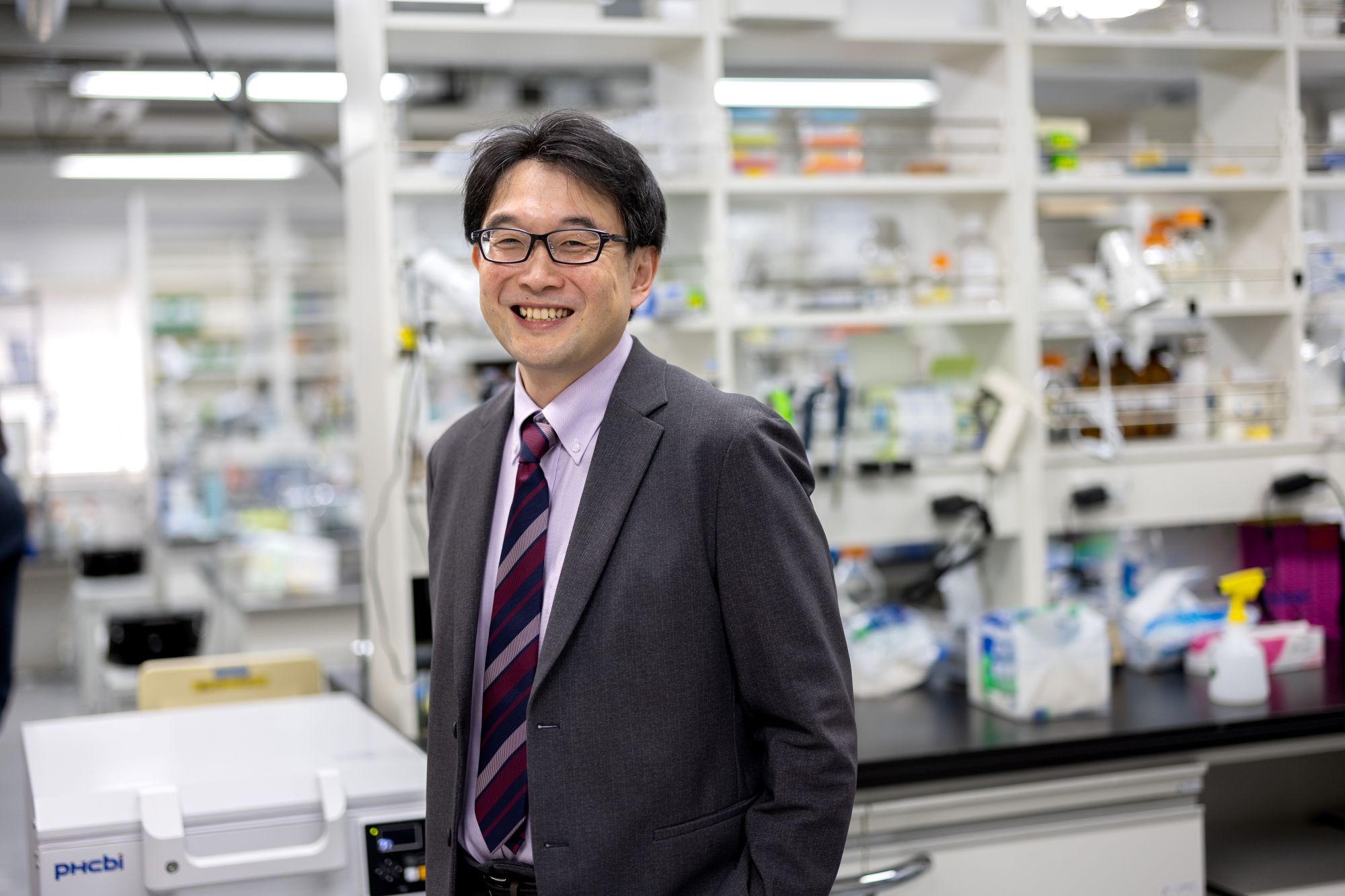
Professor Tohru Ishitani, Research Institute for Microbial Diseases
"Creating something from nothing with groundbreaking methods and ideas"
Professor Tohru Ishitani is a globally-acclaimed scientist in the field of Homeostatic Regulation and his groundbreaking discoveries have opened new frontiers in the field of life sciences. He became a Principal Investigator at just thirty-one years of age, and performs research that primarily focuses on exploring and analyzing unknown molecular systems that regulate living organisms, particularly individual functions, to control embryonic development, individual growth, and the maintenance of homeostasis in adult organisms. Notably, his use of small fish models such as zebrafish and turquoise killifish, which have rapid life cycles, has enabled experiments and analyses that are challenging to perform in mammals. His goal is to unravel the mysteries of life, uncover novel mechanisms for the regulation of aging, and develop technologies to extend healthy lifespans.
Aging mechanisms and morphostasis, A novel concept of tissue homeostasis
Professor Ishitani's laboratory focuses especially on cell-cell communication and behavior supporting tissue homeostasis and exploring unknown molecular systems controlling embryonic development, organogenesis, regeneration, aging, and disease, using in vivo imaging, animal model genetics, molecular and cell biology, and biochemistry techniques.
In early 2024, his team’s research on aging mechanisms led to the groundbreaking discovery that reproductive cells drive sex-dependent differences in lifespan and revealed the role of vitamin D in improving longevity. Using experiments with turquoise killifish, a small, fast-growing freshwater fish with a lifespan of only a few months, his team also became the first in the world to uncover that female and male germ cells increase and reduce lifespan, respectively. These effects are controlled via estrogen and growth factor hormones in females and vitamin D in males, with vitamin D supplementation extending lifespans in both males and females. The results clarified the link between reproduction and aging and showed that vitamin D may improve longevity in vertebrates. This marked a significant step in understanding the mysterious interactions between reproduction, aging, and lifespan. Furthermore, the study demonstrated for the first time that vitamin D functions as an "anti-aging hormone," a previously unknown role. These findings were published in a prominent journal, Science Advances.

Fig. 1 Model of sex-dependent regulation of organismal aging in vertebrates by germ cells.
Credit: Osaka University
As for his work in morphostasis, in late 2024, his lab discovered that defective cells arising during spinal cord and muscle formation are eliminated through cell competition. This process is essential for proper neuron and muscle (fast and slow) arrangement, motor function development, tumor suppression, and maintaining a healthy, resilient body. For the first time, a marker for cell competition in vertebrates was identified, paving the way for exploring previously unknown functions of cell competition. This study was published in Nature Communications.

Fig. 2 Physiological cell competition eliminates defective cells to support the development of functional bodies that maintain long-term health.
Credit: Ishitani et al., Osaka University

Passionate endeavors bring forth scientific serendipity
Professor Ishitani says, “In both studies, the researchers' instincts and ingenuity combined to create new methods which eventually led to groundbreaking discoveries. Coming face-to-face with living beings to discover phenomena that have never been seen before is the greatest thrill of life sciences. I think that it is precisely because young researchers have devoted themselves to such challenges that they have been able to make those kinds of important and interesting discoveries. Those are the gift of serendipity, I believe.”
Professor Ishitani himself is full of enthusiasm and ambition in uncovering phenomena, focusing his efforts towards fostering young researchers who are passionate about “surprising the world” with their discoveries.
Looking toward the future society of 2050
Aging is different for each person. By finding things such as biological matter that can extend life or control aging, or molecules that can be used as indicators of aging, I hope to be able intervene with individuals and develop technologies that will extend their own healthy life span.
Text: Saori Obayashi/Edit: Christopher Bubb